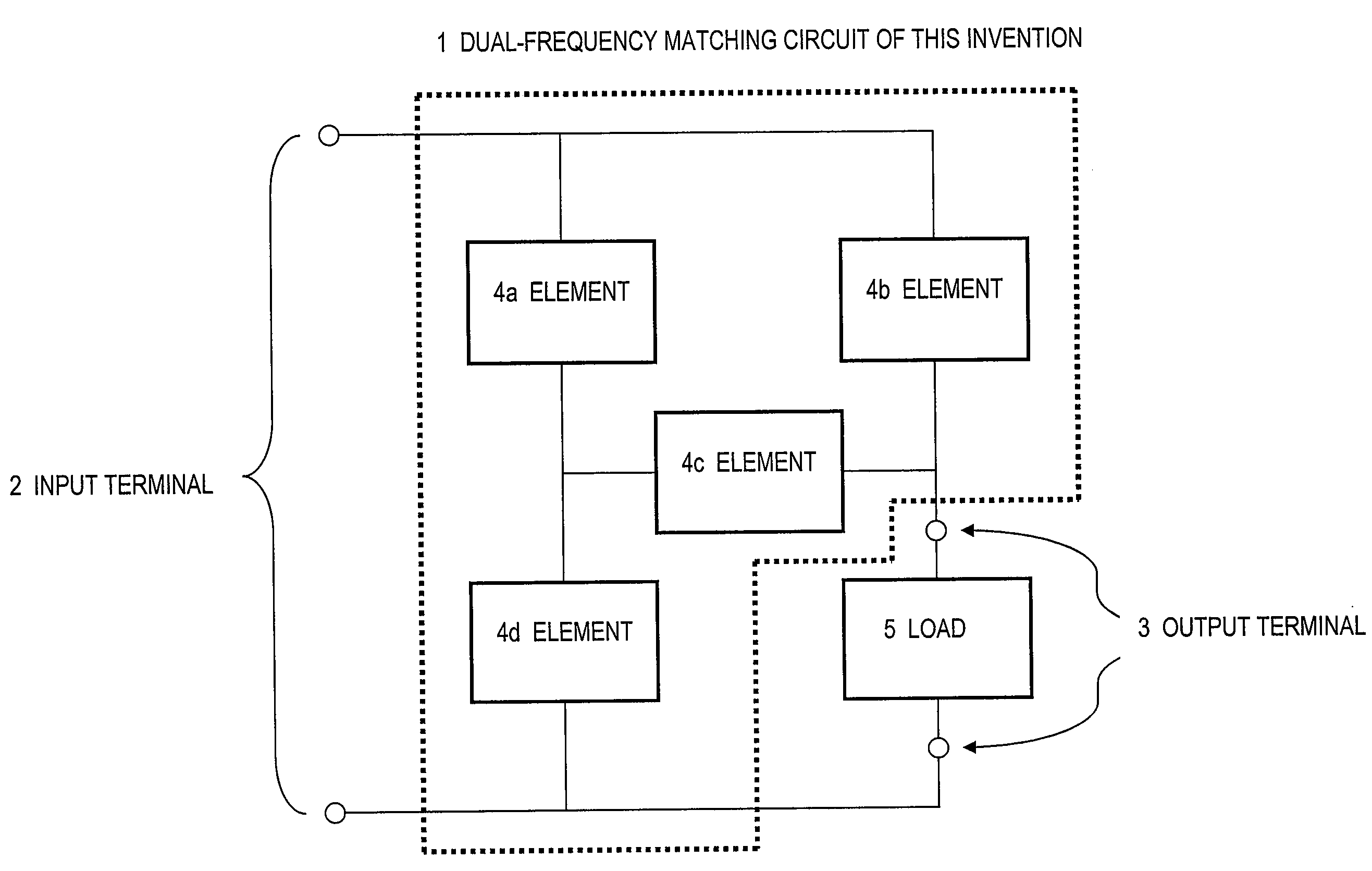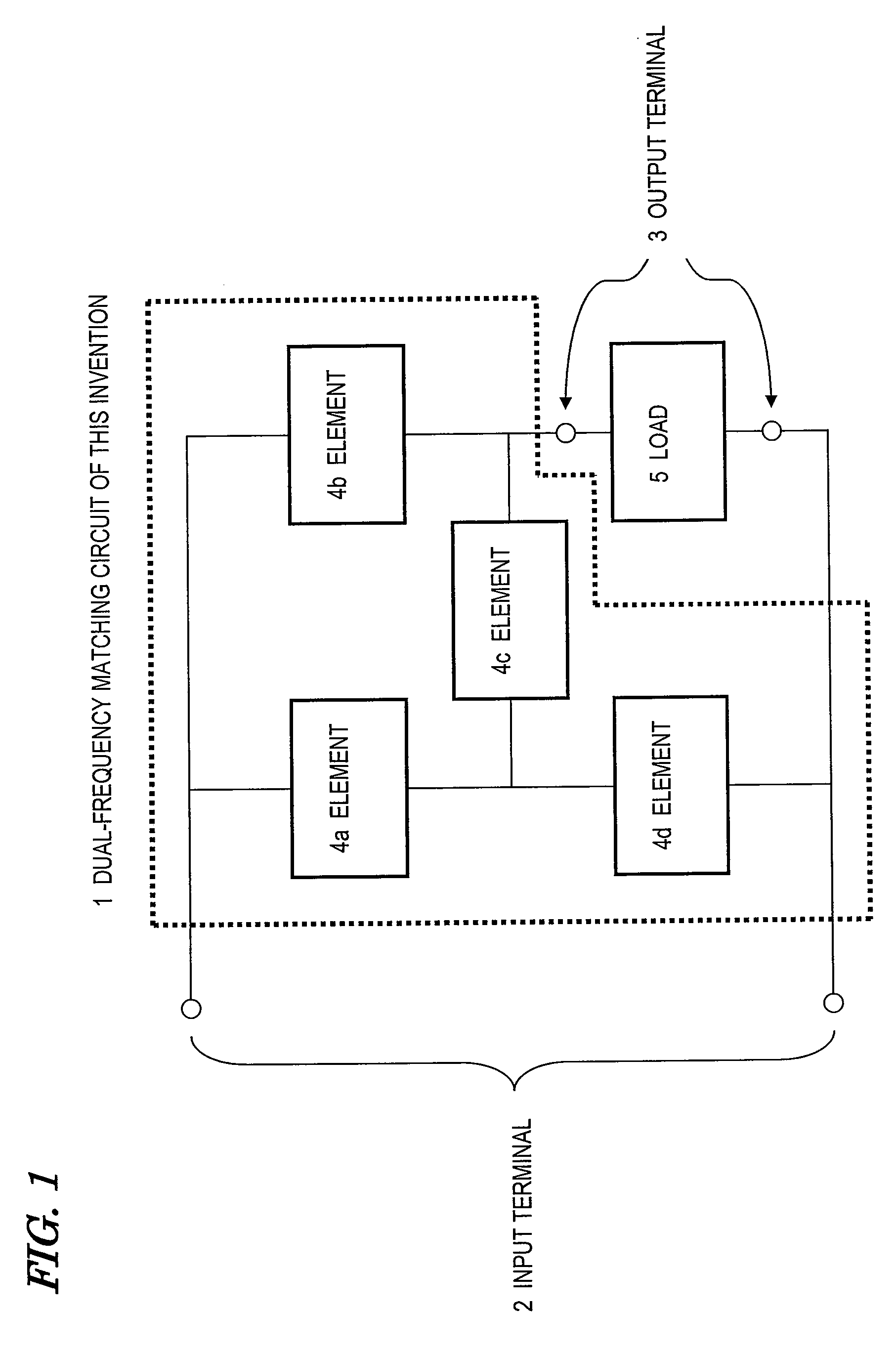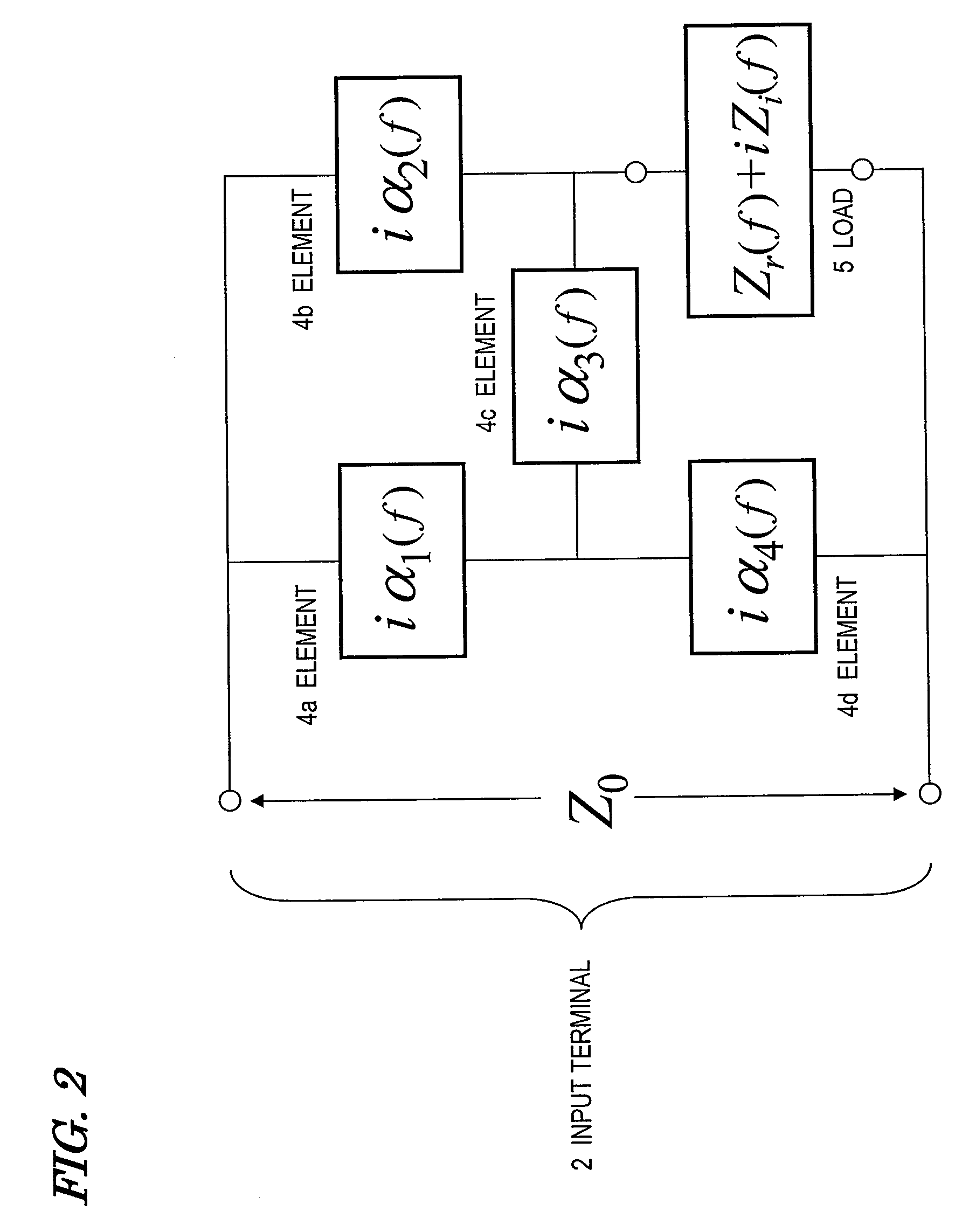Dual-frequency matching circuit
a matching circuit and dual-frequency technology, applied in the direction of waveguide type devices, antenna details, antennas, etc., can solve the problems of difficult to stabilize the matching property with respect, difficult for a normal single-frequency matching circuit to carry out flexible matching and adjustment on both of these two frequency bands, and difficult to realize good antenna properties on multiple desired frequency bands
- Summary
- Abstract
- Description
- Claims
- Application Information
AI Technical Summary
Benefits of technology
Problems solved by technology
Method used
Image
Examples
embodiment
[0044]FIG. 1 is a circuit block diagram illustrating a circuit configuration for a dual-frequency matching circuit as a preferred embodiment of the present invention. As shown in FIG. 1, the dual-frequency matching circuit 1 of this preferred embodiment includes input terminals 2 consisting of first and second input terminals 2a and 2b and output terminals 3 consisting of first and second output terminals 3a and 3b. An RF circuit (not shown) is connected to the input terminals 2, while a load 5 is connected to the output terminals 3.
[0045]The dual-frequency matching circuit 1 of this preferred embodiment includes four elements 4a, 4b, 4c and 4d, which are lumped constant elements and each of which is either an inductor or a capacitor. The types of these elements 4a, 4b, 4c and 4d, which should be either inductors or capacitors, and the specific values of their respective element constants are determined unequivocally by the impedance value of the load 5 that has been defined in adva...
specific example 1
[0059]Hereinafter, a specific example of a dual-frequency matching circuit according to the present invention will be described. The basic configuration of this specific example is the same as the configuration of the preferred embodiment shown in FIG. 1.
[0060]FIG. 4 is a perspective view showing the dimensions of an analytical model for a mobile terminal with an antenna as a specific example of the present invention. Specifically, FIG. 4A is a perspective view showing the overall dimensions of the analytical model and FIG. 4B is a perspective view showing the detailed dimensions of the antenna portion thereof. In FIG. 4, the entire analytical model is made of a metallic plate with a thickness of 100 μm and a conductivity of 4.9×10̂7 Sie / m.
[0061]As shown in FIG. 4A, the antenna 6 is an inverted F antenna formed by folding the metallic plate and is connected to the top end of a metallic box with dimensions of 40 mm×85 mm×5 mm, which represents a model of the housing 7 of a mobile ter...
specific example 2
[0082]Hereinafter, another specific example of a dual-frequency matching circuit according to the present invention will be described.
[0083]The frequency bands that are already utilized currently and the ones that will be exploited in the near future can be roughly classified into the three frequency bands, namely, a low frequency band in a 0.45 GHz range, an intermediate frequency band in 0.8 GHz, 0.85 GHz and 0.9 GHz ranges, and a radio frequency band in 1.5 GHz, 1.7 GHz, 1.8 GHz, 1.9 GHz and 2.0 GHz ranges. Among other things, the intermediate and radio frequency bands are in particularly high demand for common use. For that reason, in this specific example, a representative frequency of 0.85 GHz is selected from the intermediate frequency band and three representative frequencies of 1.55 GHz, 1.7 GHz and 2.05 GHz are selected from the radio frequency band to design an antenna first.
[0084]These frequencies are selected because all the other frequency bands are asymptotic to one o...
PUM
 Login to View More
Login to View More Abstract
Description
Claims
Application Information
 Login to View More
Login to View More - R&D
- Intellectual Property
- Life Sciences
- Materials
- Tech Scout
- Unparalleled Data Quality
- Higher Quality Content
- 60% Fewer Hallucinations
Browse by: Latest US Patents, China's latest patents, Technical Efficacy Thesaurus, Application Domain, Technology Topic, Popular Technical Reports.
© 2025 PatSnap. All rights reserved.Legal|Privacy policy|Modern Slavery Act Transparency Statement|Sitemap|About US| Contact US: help@patsnap.com



